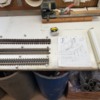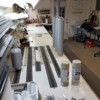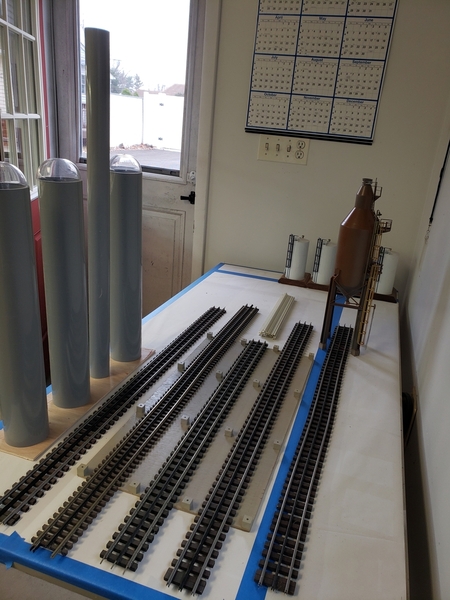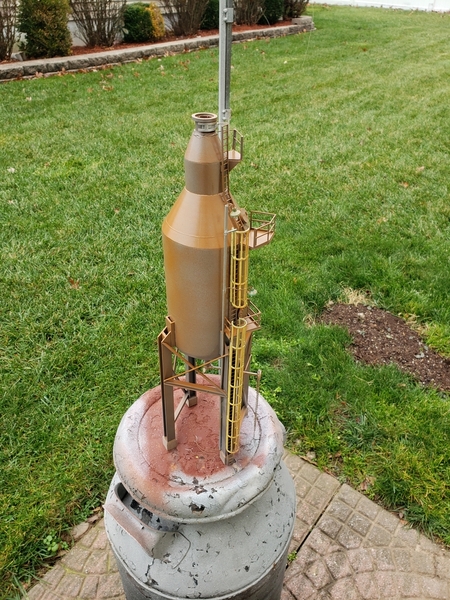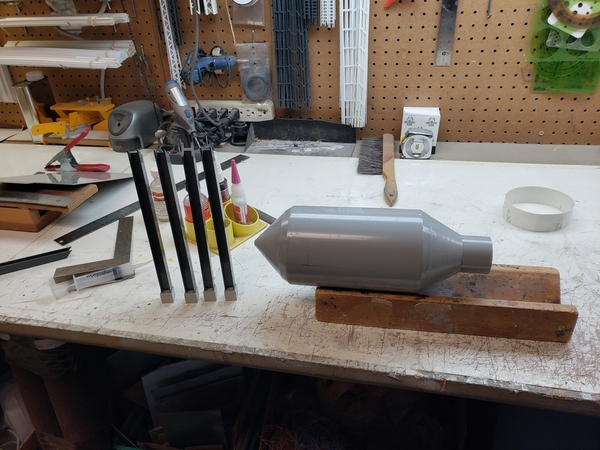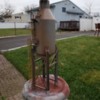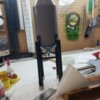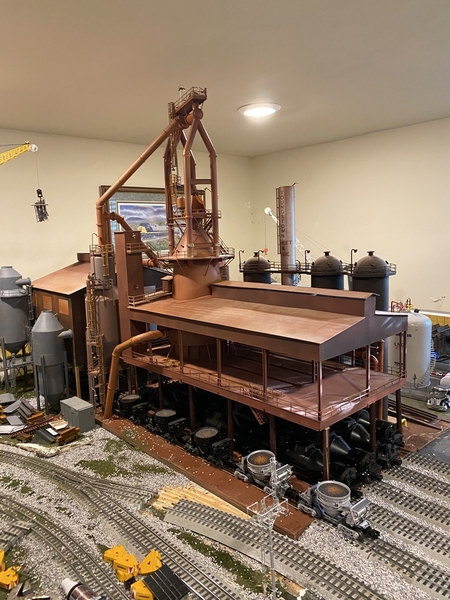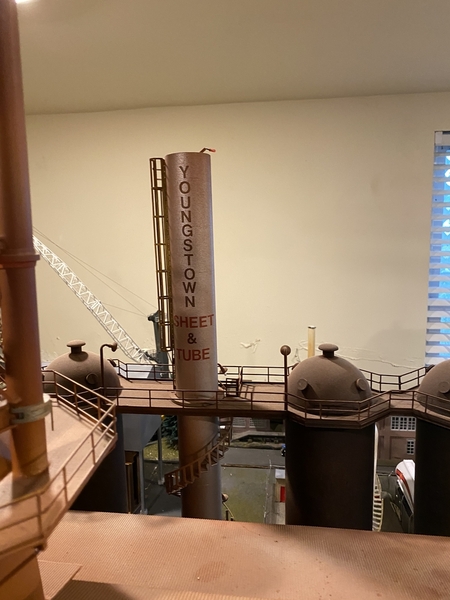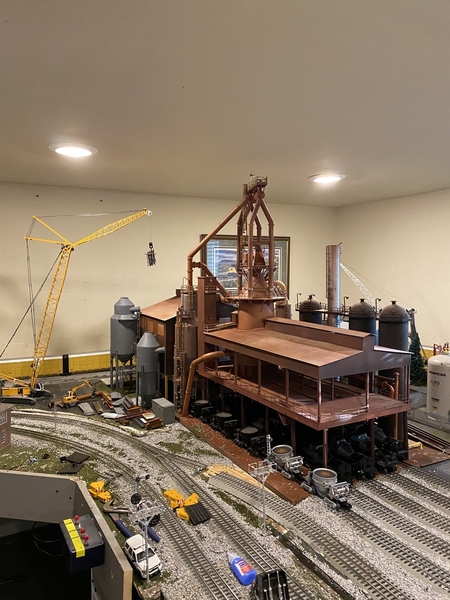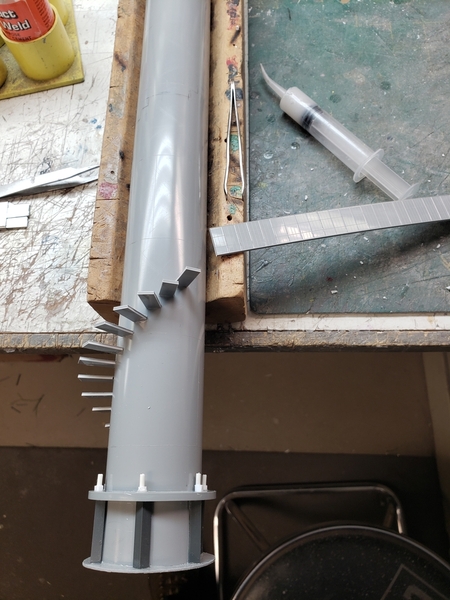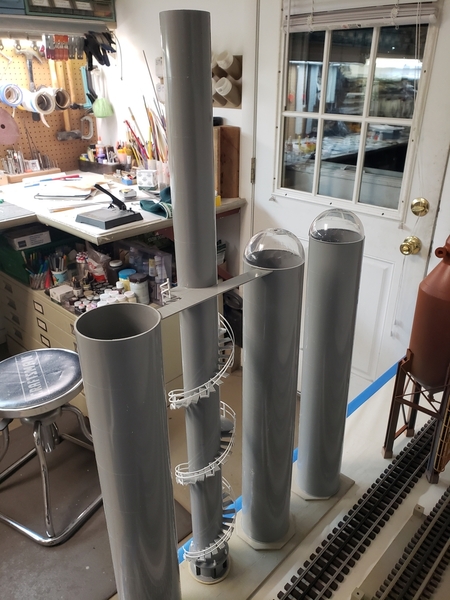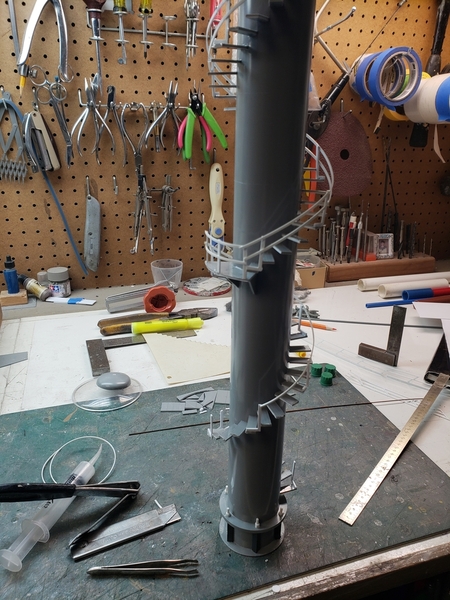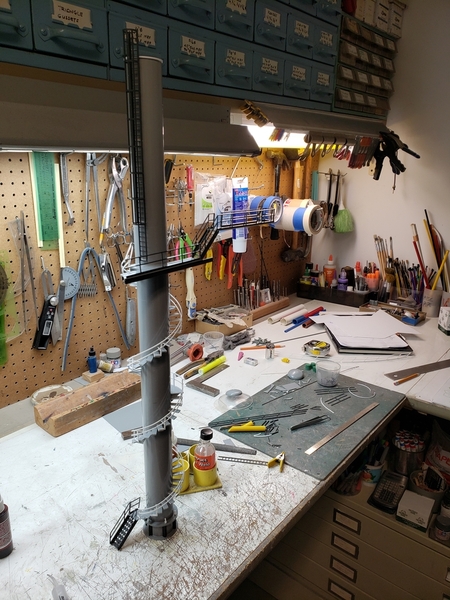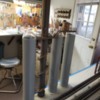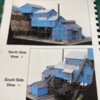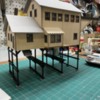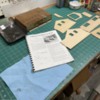Here are some pictures of the humble beginnings of a blast furnace with 
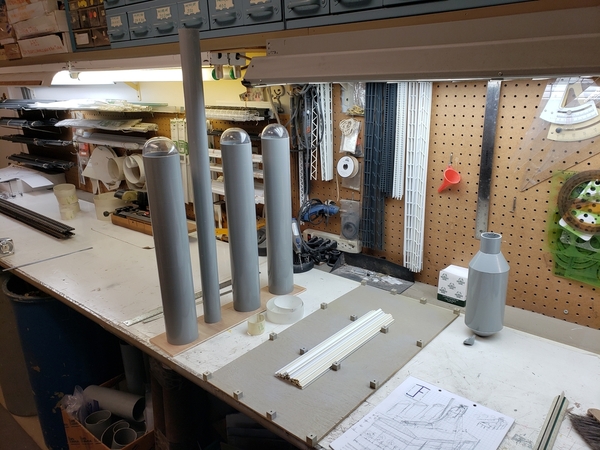
 associated structures I am building.
associated structures I am building.
Replies sorted oldest to newest
Alan, looking forward to this project. How did you make the cylinder resting on the left track in the 2nd picture?
Tom
Blast furnace is designed to produce, pig iron. raw molten iron, from iron ore and other materials supplied, top of the furnace. There is an interesting trolley car rail system that is used to move materials to the top of the furnace. Even with an abundance of steel from scrap metal, a Blast furnace produces iron without other impurities, copper most noted impurity from scrap vehicles.
From both melt procedures, the next step is removal of carbon from the molten mix. Transfer to a BOF, Basic Oxygen Furnace, where Oxygen is added to the molten mix, removing carbon. Electric arc furnace, used to melt scrap, Oxygen can be added directly to the melt, without an addition vessel.
Alan, looking good!!
Looks good so far Alan. Yes, blast furnaces made raw pig iron from iron ore (usually round marble sized pellets), limestone, and coke. Usually tracks on either side of the blast fce. where the fce was tapped, it flowed into a small pit where the slag floated to the top and was diverted to the "slag cars" and the molten pig iron was diverted to the other side into "torpedo" cars. The pig iron was then transported in the torpedo cars to the BOP where is was combined with more limestone (impurity removal), scrap steel, and alloying agents (ferro manganese, ferro silicon, etc etc) to make steel. Unfortunately, there are very few (if any) blast furnaces left in the USA. Everybody primarily melts steel scrap in an EAF (electric arc fce) nowadays.
The large book "Making , Shaping and Treating of Steel" is an excellent source for BF pics and designs, if you were to contact historical "museums" in steel towns, they will also have many pictures the can be used for reference. For ex: the Weirton Area Museum in Weirton, WV (Weirton Steel Co) www.weirtonmuseum.com 304-224-1909
Tom,
the cylinder is 4 inches in diameter by 6 inches long. I glued a 45 degree cone to one end for the bottom. The top cone is 45 degrees also necked down to 1-3/4 inch diameter. Another cone will be added to reduce to 3/4 inches for the piping that will go to the blast furnace.
Thank you Jeff.
Mike and TomO, thank you for the descriptions of the steel making process.
My construction of basic steel mill equipment is a far cry from what is really involved. It is on the same order as building a catalytic cracking unit for a refinery. Both are complex structures.
Thanks Alan for the info. Really nice. Looking forward to your updates.
Tom
Looking good Alan. Is this one going on your layout or are you building it for a client?
Bill,
This is for a customer. Maybe after retirement I can build things for myself.
@Alan Graziano posted:Bill,
This is for a customer. Maybe after retirement I can build things for myself.
Alan
I'm thinking of building one for myself. I can take lessons from you.
I'm excited to see what you do with this Alan! Keep us posted!
Nice. It looks like you might be using the HO Walters Blast Furnace for dimensioning based on one of the photos. That model was extremely compressed, and actually the furnace itself would be more appropriate for an N Scale BF. A small to medium sized 1940-50s blast furnace would need to be around 60” tall in O Scale without any compression. 1960s even taller. The Historic American Engineering Record (HAER) documented a half dozen or so US blast furnaces, most of which are gone now. They produced excellent plans and many large format black and white photos that are available online for free as part of the Library of Congress digital collection.
@J Musser posted:A small to medium sized 1940-50s blast furnace would need to be around 60” tall in O Scale without any compression.
The furnace I originally modelled was built around 1910 and still came out over 36" tall in O Scale without compression. It was an interesting way to find out how enormous these things were in real life.
@fl9turbo2 posted:
I agree. It does look awesome! ![]() I think the blast furnace "top" (the downcomers pipes) looks great. They are difficult to do and the principle reason I decided to use photographs of the Weirton Steel blast furnaces for a backdrop rather than attempt to build my own. It's hard to make a good looking blast furnace in O scale because of the immense size of the prototype. The HO flavor simply don't cut it and if you get the proportions wrong...
I think the blast furnace "top" (the downcomers pipes) looks great. They are difficult to do and the principle reason I decided to use photographs of the Weirton Steel blast furnaces for a backdrop rather than attempt to build my own. It's hard to make a good looking blast furnace in O scale because of the immense size of the prototype. The HO flavor simply don't cut it and if you get the proportions wrong...
George
Beautiful job! Very impressive.
Alan, looks great. Please keep us in the loop as you continue to move forward with this project. In my youth I worked at USX Fairless Works, Beth Steel Lehigh Plant and Beth Steel Homer Labs for a number of years right out of engineering school. Had the opportunity to see iron and steel making up close and personal, mostly from a process controls perspective. I've begun working with a Walthers BF kit. I realize it is heavily compressed (even for HO), however, it provides a reasonable approximation of the physical BF layout. I am looking at ways to beef it up a bit to give it a bit more 'O' heft. My hope is this will give me the bulk and feel of the size of a mill within a manageable footprint. I realize it is a great compromise. I am hoping it will get me close enough to the look and feel of a mill in a reasonable space. A noble goal.
Attachments
@ Alan Graziano This B.T. S. coal Tipple may have had something to do with the steel making process at one time back in history.
One day I hope to have this project behind me. It took a while for this first building to get off the ground and yesterday I actually advanced to the second building, the tipple being first of four. According to the booklet there is 1300 pieces in the whole project.
The photo of the blue buildings is the finished product from the instruction booklet. The Tipple I completed on Friday I began two weeks before Thanksgiving and hopefully I will actually complete the Conveyor House sometime Monday. The completed project will be setting in place on my friend’s layout located in Danville WV.
I actually wanted to post this on your December 12th Scenic posts but I couldn’t figure out how to make it happen.
30 minutes away from my home is the reminiscence of the ARMCO furnace which is what I understand scheduled for disassembly. Now A pretty tall rusty figure which took 1800 employees to operate the whole plant.
I enjoy watching your projects Alan ☺️




